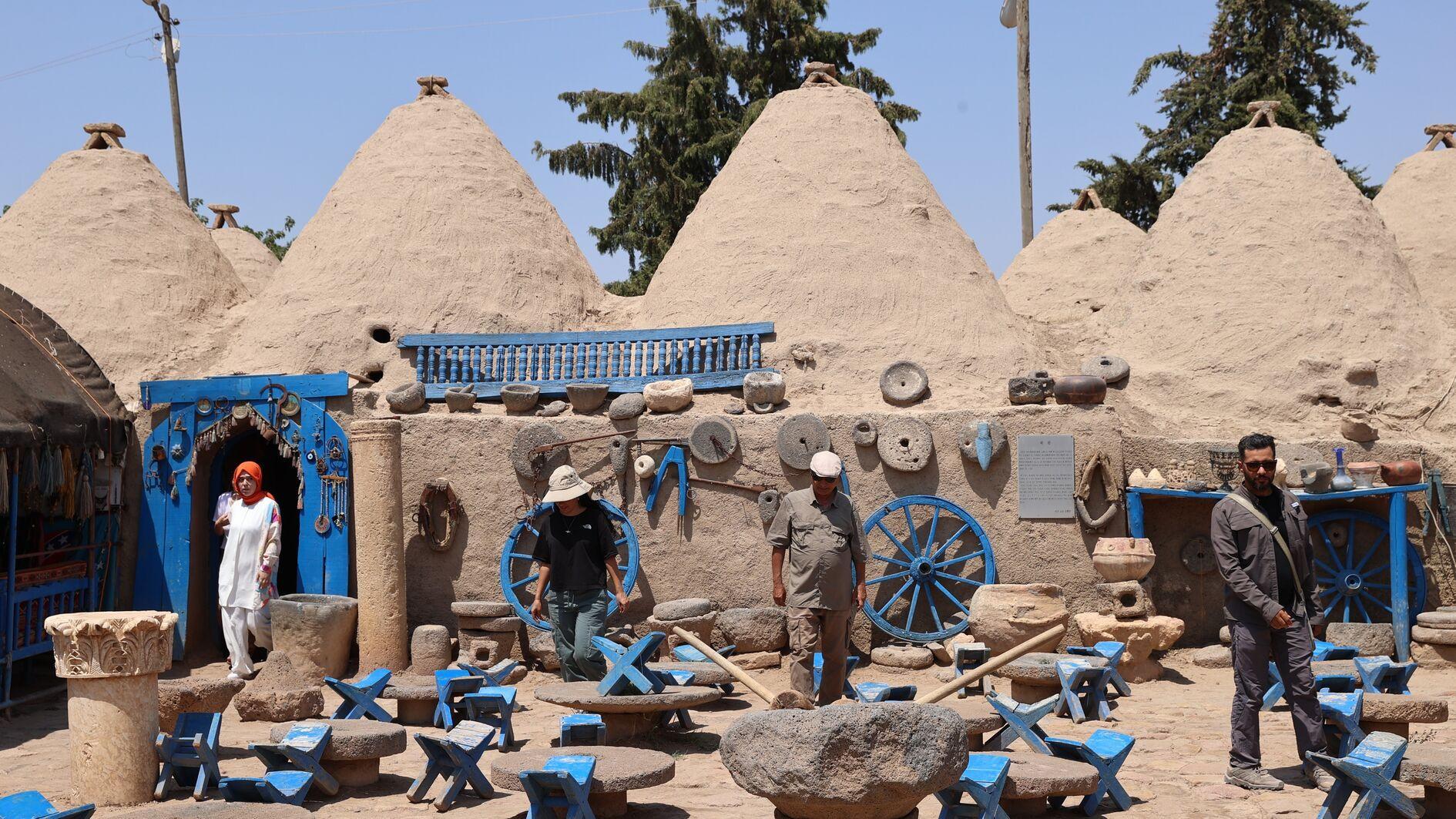
The conical houses, which have become the symbol of the historic district, attract both domestic and foreign tourists with their distinctive design.
Visitors from around the world come to experience how the traditional dwellings combine practicality with cultural heritage. Many tourists describe stepping inside as “entering another season” due to the striking temperature difference.
Standing up to five meters tall, the structures are built from limestone without mortar, while their exteriors are coated with mud. The interiors are plastered with a traditional mixture of egg whites, soil, straw, and rose oil.
As temperatures in the southeastern province of Şanlıurfa soar close to 50 degrees Celsius in summer, the cool environment inside these houses is highly valued. Visitors are often astonished by the contrast between the blistering heat outdoors and the comfortable climate indoors.
Professor Mehmet Önal, head of the Archaeology Department at Harran University and director of the Harran excavation site, said the coolest places in the district are the beehive houses.
Recalling that the area is home to residents of Arab origin, Önal noted that the name Harran is believed to derive from the Arabic word “har,” meaning heat.
He emphasized that the interiors are up to 15 degrees cooler than the outside. “In Harran, summer temperatures can reach around 50 degrees Celsius. To transform this extreme heat into coolness, the beehive house architecture has developed here over the past 250 years. Because the ceilings are very high, cooler air circulates inside. Hot air expands and rises, so the lower sections of these tall structures remain cool. Right now, while it’s around 40-45 degrees outside, it’s about 25-30 degrees inside. This architectural tradition continues today, and 127 of these houses are officially registered,” he said.
Tour operators in the region often include Harran’s beehive houses as a highlight of cultural tours in Şanlıurfa, alongside the city’s ancient ruins and archaeological sites. Local residents also welcome visitors into some of the houses, offering them a chance to experience traditional hospitality in a setting that blends history, culture, and natural climate control.
Officials and cultural heritage experts emphasize that Harran’s beehive houses could gain permanent UNESCO World Heritage status in the future, which would further boost tourism in the region. Such recognition would not only help preserve the unique architecture but also strengthen Şanlıurfa’s profile as a cultural tourism hub, drawing even greater international attention.